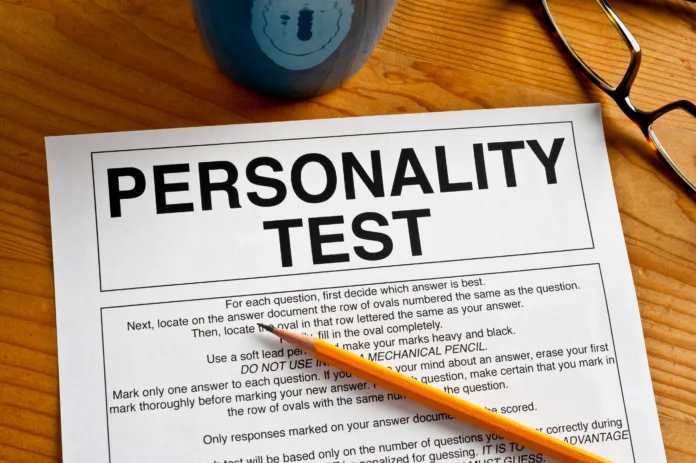Personality tests are used by businesses to assess prospective employees. They are often based on the Myers-Briggs Type Indicator (MBTI) or the Eysenck Personality Inventory. The results of these tests can help managers and recruiters make better hiring decisions. However, many factors must be considered when choosing a personality test.
Predictive Index
The predictive index of personality tests is one of the most common ways to assess a candidate’s suitability for a specific job. These personality test for employment are scientifically validated, and they are simple to administer. However, it is essential to remember that a score is not the only thing that matters in a job interview.
A predictive index test measures four core personality traits. This test is not intended to assess a candidate’s personality comprehensively.
The most popular type of Predictive Index is the PIBA. It is the newest in the line of assessments and provides a quick and easy way to gauge an employee’s strengths and weaknesses. In addition, it can give a deeper insight into the candidate’s overall performance.
Although a Predictive Index test isn’t always the best way to determine whether a candidate is suitable for a job, it can be a helpful tool. Not only does it measure personality traits, but it also gauges cognitive ability.
There are several types of Predictive Index tests, each of which has its unique features. Depending on the employer’s requirements, these tests may be used during the hiring process, along with other methods.
Myer-Briggs Type Indicator (MBTI)
Myers-Briggs Type Indicator (MBTI) is a tool for measuring and understanding personality. This test is based on Carl Jung’s theories of psychological type. It measures four distinct characteristics of a person’s character: introversion, extraversion, thinking/feeling and sensing/intuition.
MBTI is a famous personality test used to evaluate applicants for jobs. It also serves as a management tool to help managers create diverse teams that complement each other’s styles and strengths. Using the Myers-Briggs Type Indicator, organizations can improve communication, promote diversity as a value, and bring a well-rounded approach to their goals.
The MBTI is also a reflective tool that helps people learn about their natural preferences. Rather than attempting to predict performance, the MBTI helps individuals understand their unique work style, thereby eliminating conflicts and misallocation.
Isabel Myers developed the Myers-Briggs Type Indicator during the Second World War. She intended to improve communication between doctors and nurses. She was inspired by Carl Jung’s theory of individual preference. MBTI tests use a combination of almost 100 self-report items to assess these preferences.
Eysenck Personality Inventory
Eysenck Personality Inventory (EPI) is a self-report personality test. It is a 57-item true-false questionnaire that measures two distinct dimensions. These are extraversion and neuroticism. Extraversion is characterized by sociability, impulsiveness, and friendly behavior. Neuroticism is opposed to emotional stability and irritability.
The test takes between twenty and thirty minutes to complete. Each scale is comprised of twelve items. The test taker selects the statement that best describes them during the process. A score is then calculated.
In addition to the Lie and Extraversion scales, the EPI also contains a Psychoticism scale. This is a subscale that reflects the impulsivity that is a core component of Extraversion.
To understand the evolution of the newer Eysenck inventories, it is essential to examine the factor structure. This is important for three reasons:
- It helps to assess whether facets are multifactorial.
- It helps to identify the degree of semantic equivalency between factors.
- It enables researchers to use parts in different tiers.
Eysenck’s theory focused on a circumplex created by the interaction between Neuroticism and Extraversion. He believed that the biological basis for Extraversion was the Ascending Reticular Activating System.
SHL Occupational Personality Questionnaire
SHL Occupational Personality Questionnaire is an assessment that helps to identify a candidate’s traits and preferences. Companies use it to determine the individual’s suitability for certain positions. The test is often used in conjunction with other psychometric tests.
The SHL Occupational Personality Questionnaire is one of the most commonly used personality assessments. While completing the test, remember that it is essential to be honest, and consistent. If you provide contradictory responses, you might be rejected for the position.
To complete an OPQ, you should familiarize yourself with the questions and answers. You can use a pencil and paper or take the test online. A few tips to remember are that the test should be taken as honestly as possible and that you should not overthink the questions.
The OPQ is an assessment that measures 32 different personality traits. The test covers feelings, thinking styles, and people skills. There are 104 questions in all.
The SHL Occupational Personality questionnaire has been around for over thirty years and is designed to determine whether a person is suited to specific jobs. Some companies will also use the results to help them identify their employee’s work performance.
Avoid Unconscious Bias
An unconscious bias can have a significant impact on your hiring process. As an employer, taking steps to mitigate the effects is essential. There are a few ways to do this.
The first is by educating employees about unconscious bias. This can help them become more aware of their prejudices and encourage a more diverse workforce.
Second, you can implement a more structured interview. By giving the same amount of time to all candidates, you’ll be able to reduce the influence of unconscious bias.
Third, you can measure the candidate’s strengths and weaknesses with a pre-employment assessment. These tests can help you make better hiring decisions.
Fourth, you can use a personality test to identify soft skills. These tests are also great at identifying problem-solving abilities and teamwork skills.
Fifth, you can take steps to improve the overall diversity of your workforce. You can require recruiters to include more diverse candidates in their resumes, and you can also work on writing inclusive job descriptions.
Finally, you can use a well-validated personality test to develop leaders in your company. A good test will provide information on various personality traits, from how people speak to how they work with others.









![Anso FG Reviews: UPDATED 2024 [ansofg.com] Anso FG Reviews UPDATED 2024 [ansofg.com]](/wp-content/uploads/2023/12/Anso-FG-Reviews-UPDATED-2024-ansofg.com_-100x70.png)








